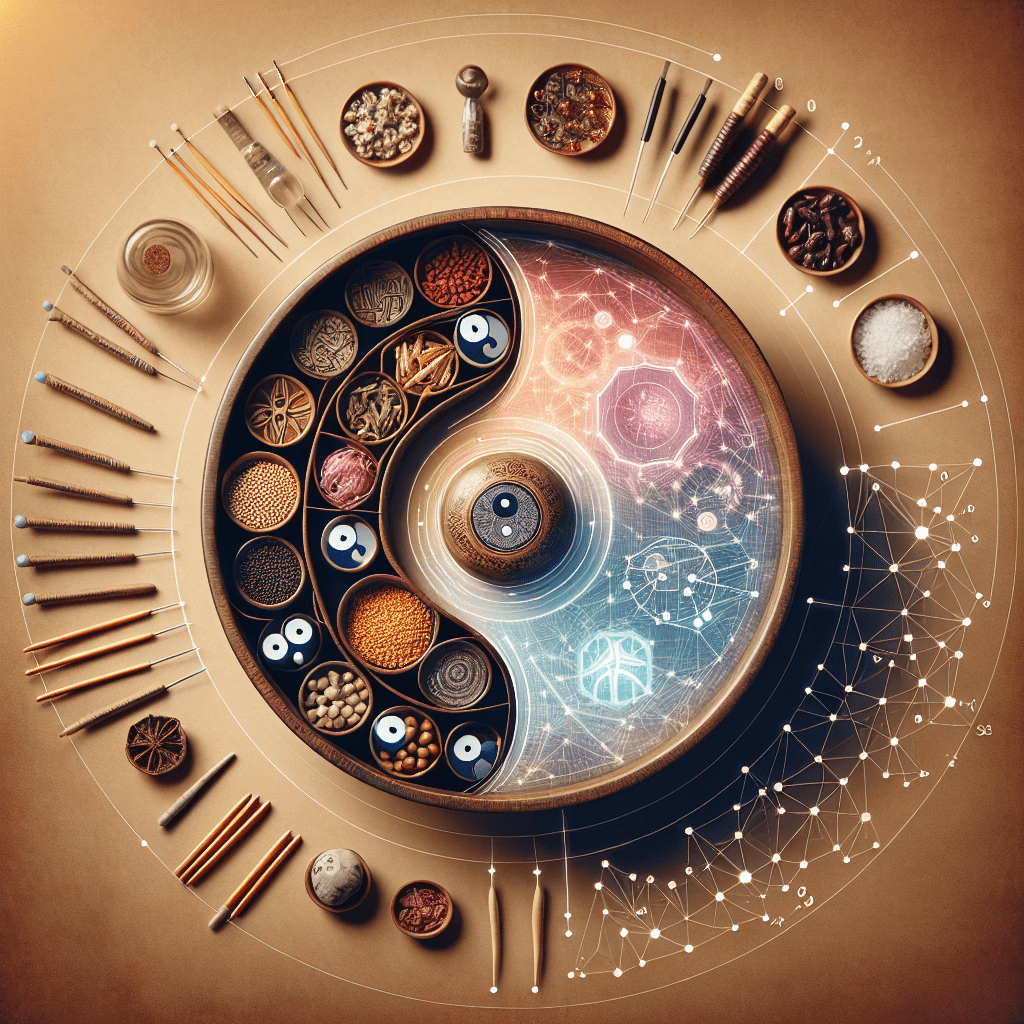In a world where healthcare often feels fragmented, complementary medicine stands as a beacon of integration, weaving together the best of Eastern wisdom and Western scientific advancement. This approach doesn’t ask us to choose between ancient traditions and modern innovations—instead, it invites us to embrace both, creating a more complete picture of health and healing.
Complementary medicine represents more than just alternative treatments; it embodies a philosophy that recognizes the complex interplay between mind, body, and spirit. Unlike conventional approaches that might focus solely on physical symptoms, complementary medicine seeks to address the whole person, considering emotional wellbeing, lifestyle factors, and environmental influences alongside physical health.
The beauty of complementary medicine lies in its inclusive nature. Rather than rejecting conventional medical treatments, it works alongside them, enhancing their effectiveness while potentially reducing side effects. This collaborative approach creates a powerful synergy that can lead to more comprehensive care and better outcomes for patients seeking holistic wellness.
Eastern and Western Medicine: Two Different Worlds
When we look at Eastern and Western medical traditions, we’re essentially observing two distinct philosophies that developed independently across millennia. Western medicine, with its roots in ancient Greece and later scientific revolution, primarily focuses on disease identification and symptom management. It excels at emergency interventions, surgical procedures, and pharmaceutical treatments that target specific pathological processes.
“Western medicine is exceptional at addressing acute conditions and crisis care,” explains Dr. James Gordon, founder of the Center for Mind-Body Medicine. “When you have a heart attack or traumatic injury, there’s no better place to be than a modern hospital.”
Eastern medicine, by contrast, developed from ancient traditions in China, India, and other Asian countries. It views health as a state of balance and harmony within the body’s energy systems. Traditional Chinese Medicine (TCM), for instance, centers around the concept of qi (vital energy) flowing through meridians, while Ayurveda from India focuses on balancing three fundamental doshas or life forces.
Eastern approaches typically emphasize prevention and treating root causes rather than symptoms alone. They consider the patient’s constitution, lifestyle, and environment as crucial factors in both disease development and healing. Herbs, acupuncture, meditation, and dietary adjustments are common tools in Eastern healing traditions.
“Eastern medicine asks why the illness occurred in the first place,” notes Dr. Lixing Lao, director of the University of Maryland’s Center for Integrative Medicine. “It looks at patterns of disharmony rather than isolated symptoms.”
While Western medicine might prescribe medication to reduce inflammation or pain, Eastern medicine might seek to understand why that inflammation exists in the first place—perhaps due to emotional stress, dietary imbalances, or energy blockages—and address those underlying factors.
Creating Synergy: When East Meets West
The true magic happens when complementary medicine bridges these approaches, creating treatments that address both immediate symptoms and underlying causes. This synergy allows patients to benefit from the precision of Western diagnostics while incorporating holistic Eastern practices that support the body’s natural healing abilities.
Take acupuncture, for example. This ancient practice involves inserting thin needles at specific points along the body’s meridians to restore energy flow. While traditional Eastern explanations focus on balancing qi, Western research has demonstrated that acupuncture stimulates the nervous system, triggers the release of pain-relieving endorphins, and reduces inflammation. For patients with chronic pain conditions like arthritis or fibromyalgia, combining conventional pain management with acupuncture often provides better relief than either approach alone.
Similarly, herbal medicine offers powerful examples of East-West synergy. Many plants used in traditional healing contain compounds with pharmacologically active properties. For instance, turmeric, a staple in both Chinese and Ayurvedic medicine, contains curcumin—a compound with potent anti-inflammatory effects backed by modern scientific research.
“The beauty of combining approaches is that herbal remedies can often address multiple symptoms simultaneously while supporting overall wellness,” explains herbalist Mary Chen. “When used alongside conventional treatments, they can help reduce medication dosages and minimize side effects.”
This synergistic approach is particularly valuable for managing chronic conditions like diabetes, heart disease, and autoimmune disorders. While Western medicine provides essential monitoring and intervention, complementary approaches like mindfulness practices, dietary therapy, and herbal supplements can help address lifestyle factors and reduce stress—key contributors to these conditions.
Patient-Centered Care: The Heart of Integration
At its core, complementary medicine embraces patient-centered care—an approach that places individuals’ needs, preferences, and values at the forefront of treatment decisions. This philosophy recognizes that each person brings unique circumstances, beliefs, and goals to their healing journey.
“When we truly listen to patients, we often discover that they’re seeking more than symptom relief,” says Dr. Victoria Maizes, executive director of the University of Arizona Center for Integrative Medicine. “They want to understand why they’re ill and what they can do to participate in their own healing.”
Patient-centered complementary medicine invites active participation rather than passive compliance. It creates space for meaningful conversations about treatment options, acknowledging both conventional and alternative approaches. This collaborative model empowers patients to make informed choices that align with their values and lifestyle.
For Maria Santos, a 52-year-old with chronic migraines, this approach made all the difference. “For years, I took medications that dulled the pain but left me foggy and disconnected,” she shares. “When my doctor suggested we integrate acupuncture and stress reduction alongside my medication, everything changed. I’m not just managing symptoms now—I’m addressing the root causes and have fewer episodes overall.”
Healthcare providers practicing complementary medicine develop treatment plans tailored to individual needs rather than following one-size-fits-all protocols. This might mean combining pharmaceutical interventions with nutritional counseling, recommending mind-body practices alongside physical therapy, or integrating herbal supplements with conventional medications when appropriate and safe.
Cultural Influences on Complementary Medicine
The acceptance and integration of complementary medicine vary significantly across cultures and healthcare systems. These differences reflect not only medical traditions but also cultural values, historical contexts, and socioeconomic factors.
In East Asian countries like China, Japan, and Korea, traditional medicine has maintained a prominent place alongside Western approaches. China’s healthcare system officially incorporates Traditional Chinese Medicine, with dedicated hospitals and university programs. Patients might receive acupuncture in the same facility where they undergo surgery or receive cancer treatment.
European countries have varying relationships with complementary medicine. Germany has embraced natural medicine (Naturheilkunde) as part of its medical tradition, with widespread acceptance of herbal remedies and natural therapies. Many German physicians receive training in both conventional and complementary approaches.
In the United States, complementary medicine has gained significant ground in recent decades, though integration remains inconsistent. Centers for integrative medicine at prestigious institutions like Harvard, Stanford, and the Mayo Clinic signal growing acceptance, yet insurance coverage and accessibility remain challenging for many patients.
Cultural attitudes toward health, disease, and healing play a crucial role in how complementary medicine is perceived and practiced. Societies that value prevention and holistic wellness tend to embrace complementary approaches more readily than those focused primarily on treating disease after it manifests.
“Different cultures have different relationships with concepts like balance, energy, and the connection between mind and body,” observes anthropologist Dr. Nina Thompson. “These cultural frameworks deeply influence how people understand health and what treatments feel intuitively right to them.”
Growing Acceptance and Research Support
The landscape of complementary medicine is evolving rapidly, with growing research support and increasing acceptance among healthcare providers and institutions. What was once dismissed as unscientific is now being studied with rigorous methodology, revealing evidence for practices that traditional healers have employed for centuries.
Research into acupuncture exemplifies this shift. Multiple high-quality studies now demonstrate its effectiveness for conditions including chronic pain, chemotherapy-induced nausea, and postoperative recovery. The National Institutes of Health acknowledges acupuncture as an evidence-based intervention for several conditions, representing a significant evolution in scientific perspective.
Mindfulness meditation, another practice with ancient roots, has been the subject of thousands of research studies documenting benefits for stress reduction, depression, anxiety, and even immune function. Major medical centers now offer mindfulness programs alongside conventional treatments.
Dr. Andrew Weil, a pioneer in integrative medicine, notes: “We’re witnessing a transformation in how the medical establishment views these therapies. The research has become too compelling to ignore.”
This growing evidence base has fueled institutional changes. More than half of U.S. medical schools now offer courses in complementary medicine, preparing the next generation of physicians to understand and potentially incorporate these approaches. Many hospitals have established integrative medicine departments that work collaboratively with conventional specialties.
Patient demand has been another powerful driver of acceptance. As consumers become more informed and proactive about their health, they increasingly seek out providers who can offer both cutting-edge conventional care and evidence-based complementary options.
The Future: A Truly Integrated Healthcare Landscape
As we look toward the future, complementary medicine points toward a healthcare landscape where the artificial boundaries between Eastern and Western approaches dissolve, replaced by a truly integrated model that draws from all effective healing traditions.
This future vision centers on personalized, preventive care that addresses the whole person. Rather than waiting for disease to develop, integrated healthcare would help individuals maintain balance and optimal function through customized approaches combining conventional and complementary strategies.
Technology will likely play a pivotal role in this integration. Artificial intelligence systems like EASTCHI AI are already demonstrating how ancient wisdom can be made accessible through modern platforms. These technologies can analyze individual health patterns and recommend personalized interventions drawn from both conventional and traditional knowledge bases.
The healthcare providers of tomorrow will likely be trained in multiple healing paradigms, comfortable moving between scientific research and traditional healing wisdom. They’ll recognize that some patients benefit most from pharmaceutical interventions, others from natural approaches, and many from thoughtful combinations of both.
“The most exciting development isn’t just the acceptance of complementary medicine,” says Dr. Rachel Lin, a physician specializing in integrative oncology. “It’s the emergence of a new paradigm that transcends the old categories entirely—one that simply asks what works best for this particular person facing these specific challenges.”
This integrated future aligns perfectly with the philosophy that guides organizations like HerbalsZen, which bridges ancient Eastern healing traditions with cutting-edge technology. By honoring time-tested wisdom while embracing scientific advancement, complementary medicine offers a more complete approach to human health—one that recognizes our complexity as physical, emotional, and spiritual beings.
In a world often divided by either/or thinking, complementary medicine offers a both/and solution. It reminds us that wisdom comes in many forms, and that true healing draws from multiple sources of knowledge. The bridge between ancient traditions and modern science isn’t hidden anymore—it’s becoming the main road to a healthier future.




